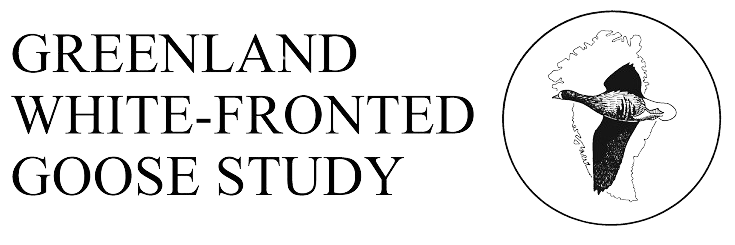History
Neither Berry (1939), A-W (1963) nor R&O (1979) report White-fronted Geese on Mull at all, so there is no extended history of this flock beyond the time of Richard Coomber, who recorded geese from the Ross of Mull since 1975.
Status
Regional importance (not known to R&O). This flock was always considered a separate group from those that resorted to Loch Assapol, but ever since the first counts from this resort, numbers have fluctuated widely suggesting that there may well have been interchange between the two groups and/or that other feeding sites used by this flock remain to be discovered, not least on Iona where this flock has been noted to resort. Although there have been marked birds seen on Mull, they have not been helpful in enlightening exchange between the feeding areas. Numbers at this resort have shown a tendancy to gradually decline from an initial count of 90 1976 to around 50 in recent seasons.
Maximum winter counts:
Breeding success: Small flock size and few data.
Feeding sites and habitat: Geese feed mostly at Fidden (NM304217) on reseed, rough pasture and adjacent blanket mire in this part of the island, although they have been occasionally seen away to the north and south of Fidden farmhouse. There have been frequent sightings of geese from the offshore island of Iona, where the geese have been watched feeding on the short maritime turf, and interchange between the island, mainland Mull and potentially with the Loch Asspol flock are now recognised not to be well understood.
Roosting sites: The geese have been witnessed flighting to Loch Poit na h-l (NM313223) where they roost on the west shore of the loch. Displaced birds have also been seen resting and preening on eastern shore and at the extreme southern end of the loch. Local information has suggested that they also use Erraid (NM3019) as a roost and may feed there in daytime, but confusion with Greylag Geese is a possibility here.
Habitat change: None known to affect the geese.
Aircraft disturbance: The site is near a low-flying route, but is less affected than the flock at nearby Claish and Kentra Mosses.
Hunting disturbance: Not known, but not thought a problem.
Agricultural disturbance: Not known, but not thought significant.
Site safeguard: None.
SNH Natural Heritage Zones/Area: Western Seaboard.
Threats: None known.
Linkages with other sites: Nine collared birds have been seen amongst this little group, a surprising number considering the relative modest size of the flock. One, 9UE was a Wexford-wintering regular from 1987/8 until 1991/2, but it stopped briefly at Fidden on 30th October 1988 before turning up at Wexford on 17th November 1988. C0L was caught in west Greenland in summer 1992, and was seen just once on 3rd March 1993. C2C was caught at Wexford in 1992/3 where it wintered in 1993/4, but moved to Bute in 1994/5 and 1995/6 before shifting to Mull for the winter of 1996/7, where it was associating with its unringed mate and four unmarked offspring. It was not seen again until the winter of 2000/1, when it turned up on Islay and where it remained until 2002/3. F8S was ringed at Wexford in 1995/6, but was on Mull from 20th November 1996 until at least 1st April 1997. Subsequently, it was back at Wexford on 20th October 1997, but in an unprecedented move, shifted back to Islay where it was to winter the rest of that year and every winter until 2003/4, yet wintered again at Wexford in 2004/5. Finally, a family group N0T (female) and N2T (male) with their offspring N2P, N4P and N4T were caught at Wexford in winter 2003/4, but all showed up at Fidden in 2004/5.
References
Berry, J. (1939) The status and distribution of wild geese and wild duck in Scotland. University Press, Cambridge.
